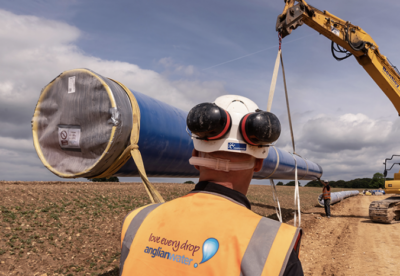Transport Scotland has released time lapse footage of the work overseen by the Scottish Roads Partnership and its main contractors Ferrovial Lagan and Amey
The film shows nine pairs of 3m high steel beams, approximately 77m in length and weighing almost 2,000 tonnes, being lowered into position over the North Calder Water, near Bellshill in North Lanarkshire.
The construction of North Calder Water Bridge is part of major works to upgrade Shawhead Junction.
The new bridge will carry traffic on the new M8 over the North Calder Water to the south of the existing A8.
Before any lifting could begin, a massive 1350 tonne crane – the largest crawler crane in the UK and one of the biggest in Europe – was delivered to site by a fleet of 33 HGVs and assembled on site over five days.
When fully assembled the crane stood 90 metres in height, towering over the Lanarkshire skyline, and required two smaller cranes – a 750 tonne and a 200 tonne crane to build it.
With a maximum lifting capacity of 1350 tonnes, the operator had to perfectly balance the crane with counterbalance weights ahead of every lift – a slow and meticulous process to ensure a precise and safe operation.
Dario Saavedra, construction manager for Ferrovial Lagan Joint Venture, said: “This is a significant milestone for the project and a successful operation which we are very proud of.
“The beam installation took nine days to complete, lifting the giant beams onto the two new bridge abutments, each of which contain over 6000 tonnes of reinforced concrete.
“The beam lift was a complex piece of engineering and an important step towards completion of this impressive project.”
Lyle Cairns, section site engineer, has overseen the progress of the new structure.
He said: “The first excavation for the bridge began in summer 2015 and it is scheduled for completion in September of this year.
“The beam lift was very exciting to be part of as this was a challenging engineering operation, however, from a personal point of view; it’s pleasing to see the entire construction from start to finish. The most challenging aspect of this structure was the sheer scale and size involved.”
















































.gif)








